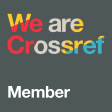Una experiencia de innovación pedagógica basada en la clase inversa y las nuevas tecnologías. Análisis de resultados de aprendizaje y satisfacción en un curso de la universidad
DOI:
https://doi.org/10.51302/tce.2017.152Palabras clave:
clase inversa, nuevas tecnologías, aprendizaje, satisfacción, universidadResumen
Este trabajo ha obtenido el 1.er Premio Estudios Financieros 2017 en la modalidad de Educación y Nuevas Tecnologías.
Este artículo busca responder las siguientes cuestiones: «¿consigue la metodología de la clase inversa apoyada en el uso de las nuevas tecnologías mejorar el aprendizaje y la satisfacción de los estudiantes?» y «¿cuáles son las sugerencias de mejora después de aplicar esta metodología?». Este estudio está basado en la experiencia de un grupo de estudiantes que cursó la asignatura de Gestión de Recursos Humanos (RR. HH.) durante el año 2015/2016 usando esta metodología innovadora y comparándose con otros tres grupos que emplearon la metodología de la clase tradicional. Los resultados fueron medidos mediante la realización de un mismo examen al alumnado, la distribución de un cuestionario de forma anónima (con preguntas cualitativas) y las encuestas oficiales de satisfacción docente que se realizan en la universidad. En términos de aprendizaje, las puntuaciones del examen fueron significativamente superiores para el grupo que se sometió a la experiencia piloto. Sin embargo, la satisfacción de los estudiantes con la calidad de la enseñanza fue más baja que la de los demás grupos. Los comentarios cualitativos de los estudiantes nos ayudaron a entender estos resultados heterogéneos y a establecer mejoras para los cursos siguientes. Las contribuciones del estudio, así como las limitaciones y futuras líneas de investigación y enseñanza aparecen indicadas al final del artículo.
Descargas
Citas
Aguado, R. [2014]: Es emocionante saber emocionarse, 3.ª ed. Madrid: EOS.
Alba-Ferré, E.; Moreno Blesa, L. y Ruiz González, M. [2015]: «The star system apps to bridge educational gaps: kahoot, screencast y tableta gráfica», XII Jornadas Internacionales de Innovación Universitaria. Educar para transformar: aprendizaje experiencial.
Alfalla-Luque, R.; Medina-López, C. y Arenas-Márquez, F. [2011]: «Mejorando la formación en Dirección de Operaciones: la visión del estudiante y su respuesta a diferentes metodologías docentes», Cuadernos de Economía y Dirección de la Empresa, 14, págs. 40-52.
Anderson, L. W.; Krathwohl, D. R.; Airasian, P. W.; Cruikshank, K. A.; Mayer, R. E.; Pintrich, P. R.; Raths, J. y Wittrock, M. C. [2001]: A taxonomy for learning, teaching, and assessing: a revision of Bloom's taxonomy of educational objectives, New York: Longman.
Aşkisoy, G. y Özdamli, F. [2016]: «Flipped classroom adapted to the ARCS model of motivation and applied to a physics course», Eurasia Journal of Mathematics, Science and Technology Education, 12 (6), págs. 1.589-1.603.
Brown, C. A.; Danvers, K. y Doran, D. T. [2016]: «Student perceptions on using guided reading questions to motivate student reading in the flipped classroom», Accounting Education, 25 (3), págs. 256-271.
Castilla-Pozo, F. [2011]: «Calidad docente en el ámbito universitario: un estudio comparativo de las universidades andaluzas», Revista de Educación en Contabilidad, Finanzas y Administración de Empresas, 2, págs. 157-172.
Evaristo, I. [2015]: «Experiencia universitaria de flipped classroom en cursos de comunicación: ¿qué opinan los estudiantes?», Anais da X Conferência Latino- Americana de Objetos e Tecnologias de Aprendizagem [LACLO 2015], págs. 266-275.
Freeman, S.; Eddy, S. L.; McDonough, M.; Smith, M. K.; Okoroafor, N.; Jordt, H. y Wenderoth, M. P. [2014]: «Active learning increases student performance in science, engineering, and mathematics», Proceedings of the National Academy of Sciences, 111, pág. 23.
Giné-Freixes, N. [2009]: «Cómo mejorar la docencia universitaria: el punto de vista del estudiantado», Revista Complutense de Educación, 20, págs. 117-134.
Green, T. [2015]: «Flipped classroom: an agenda for innovative marketing education in the digital era», Marketing Education Review, 25 (3), págs.179-191.
Hamdan, N.; McKnight, P.; McKnight, K. y Arfstrom, K. M. [2013]: «The flipped learning model: a white paper based on the literature review titled "A review of flipped learning"», The Flipped Learning Network Hub. Disponible en: http://flippedlearning.org
Hao, Y. [2016]: «Middle school students’ flipped learning readiness in foreign language classrooms: exploring its relationship with personal characteristics and individual circumstances», Computers in Human Behavior, 59, págs. 295-303.
Imbernon, F. [2009]: «Mejorar la enseñanza y el aprendizaje en la universidad», Cuadernos de Docencia Universitaria, 14, págs. 1-42.
Karlsson, G. y Janson, S. [2015]: «How to create blended learning. Guidelines for improved teaching with flipped classroom and active learning», Report Number TRITA-EE, 2015:028, KTH Vetenskap Och Konst.
Lento, C. [2016]: «Promoting active learning in introductory financial accounting through the flipped classroom design», Journal of Applied Research in Higher Education, 8 (1), págs. 72-87.
Lujan, H. L. y DiCarlo, S. E. [2014]: «The flipped exam: creating an environment in which students discover for themselves the concepts and principles we want them to learn», Advanced Physiology Education, 38, págs. 339-342.
Marsh, H. W. [1982]: «SEEQ: a reliable, valid and useful instrument for collecting students´ evaluations of university teaching», British Journal of Educational Psychology, 52 (1), págs. 77-95.
Miller, G. E. [1962]: «An enquiry into medical teaching», Journal of Medical Education, 37, págs. 185-191.
Scott, C. E.; Green, L. E. y Etheridge, D. L. [2016]: «A comparison between flipped and lecture-based instruction in the calculus classroom», Journal of Applied Research in Higher Education, 8 (2), págs. 252-264.
Tsai, C. W.; Shen, P. D. y Lu, Y. J. [2015]: «The effects of problem-based learning with flipped classroom on elementary students´ computing skills: a case study on the production of ebooks», International Journal of Information and Communication Technology Education, 11 (2), págs. 32-40.
Tolks, D.; Schäfer, C.; Raupach, T.; Kruse, L.; Sarikas, A.; Gerhardt-Szép, S.; Kllauer, G.; Lemos, M.; Fischer, M. R.; Eichner, B.; Sostmann, K. y Hege, I. [17 de mayo de 2016]: «An introduction to the inverted/flipped classroom model in education and advanced training in medicine and in the healthcare professions», Journal of Medical Education, 33 (3), 23 págs.
Whiting, P. [2015]: «Action research into reducing the workload for the flipped classroom», Science Education News, 64 (3), págs. 60-70.
Descargas
Publicado
Cómo citar
Número
Sección
Licencia
Derechos de autor 2017 María Eugenia Sánchez Vidal, David Cegarra Leiva, Olga Rodríguez Arnaldo

Esta obra está bajo una licencia internacional Creative Commons Atribución-NoComercial-SinDerivadas 4.0.


























